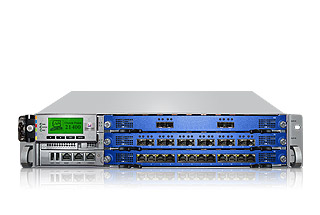On Wednesday, Check Point released a new blade to its Software Blade Architecture, in order to help organizations prevent and respond to bot-based threats. In addition, the company announced seven other security appliances, promising scalable firewall throughput of up to 100 Gbps.
 According to Check Point, complaints about Internet criminal activity dropped about ten-percent last year, but the number of hijacked computers infected with bot-related malware rose to over 600-percent. This, the company said, shows that while computer users are getting savvier, criminals are finding new ways to attack as compensation. There are an estimated 5 million bots worldwide, and it is because of them that 88-percent of the world’s spam exists.
According to Check Point, complaints about Internet criminal activity dropped about ten-percent last year, but the number of hijacked computers infected with bot-related malware rose to over 600-percent. This, the company said, shows that while computer users are getting savvier, criminals are finding new ways to attack as compensation. There are an estimated 5 million bots worldwide, and it is because of them that 88-percent of the world’s spam exists.
“With bot toolkits for hackers selling today for a mere price of $500 and attacks costing businesses millions of dollars, it gives people insight into how big the problem has become. As seen with Mariposa, TDL-4, and Zeus, botnets are stealthy in nature and have the potential to infect millions of computers,” said Dorit Dor, vice president of products at Check Point Software Technologies.
Check Point’s Anti-Bot Software Blade, uses its ThreatSpect detection engine, which discovers bots by examining multiple risk factors, such as botnet patterns, remote operator hide-outs and attack behaviors, the company explained in a release.
In addition to Check Point’s discovery technology, the Anti-Bot Software Blade can be layered alongside existing security protections, such as Intrusion Prevention, Antivirus, Anti-Spam, and URL Filtering.
Today also marked the launch of seven new appliances, starting at about $3,600 USD. The new security appliances, which include the 2200, 4200, 4600, 4800, 12200, 12400, and 12600 models, as well as the powerful 21400 model recently announced on August 2, are all designed to work alongside Check Point’s Blade Architecture. The new appliances promise 3 to 100 Gbps in firewall throughput, and 2 to 21 Gbps in IPS throughput, depending on the spec order.
Check Point’s Blade Architecture is comprised of independent security modules, which can be combined to build a custom security gateway, or ordered in pre-built bundles. So the new models translate into more choices for enterprise customers, as well as one other benefit.















